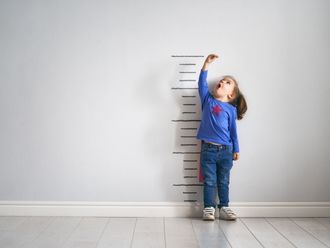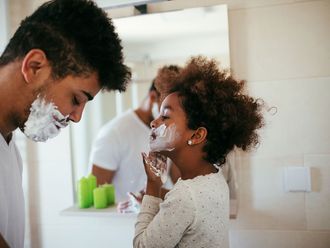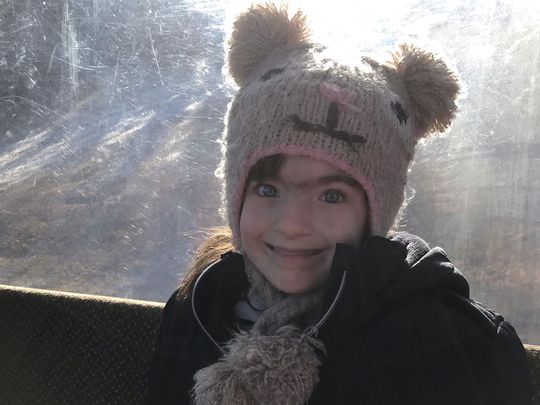
She has almond-shaped eyes that sparkle when the light hits them just right. Her cheeks have a natural dusting of rose. She has fine dark hair that cascades down her back. And a smile like fireworks. She likes to dance and swim. She loves to cook – she wants to be a chef when she grows up. She is Hasti – a 10-year-old with a rare genetic condition called Cornelia de Lange Syndrome (CdLS).
The disease, which is estimated to manifest in 1 in 10,000 live births and caused by a genetic mutation, is a harbinger of physical, intellectual and behavioural challenges.
For Hasti, who lives in the UK, the diagnosis itself was an uphill climb. Her father, international Gulf News reader British Army Major Chris Brannigan, recalls the early days. “When Hasti was born, she was very ill for a long time; when we took her home from the hospital, she had a seizure on the first day she was home. Which was really, really scary. She was only three days old at that point.”
From then, it was a shuttle between hospital and home. “Hasti wouldn’t eat for the first year of her life. So as a result, she was in and out of hospital, she had to be fed via tube for a long time. Even then, my wife had to feed her while she was asleep – that was the only time she would suck a bottle, for example,” says the Gulf News reader.
As time went by and developmental milestones continued to be delayed, the parents knew something was amiss. “We knew something was wrong, but we just didn’t know what that was. And doctors were confused about what might be happening with Hasti,” says 41-year-old Brannigan. Then three years ago they had their answer. He doesn’t blame the doctors during his interview, saying in a matter-of-fact manner, “Genetic diagnoses in the UK are not run of the mill, so there is early screening for about six conditions in the UK, but there are 7,000 known and recognised rare diseases.”
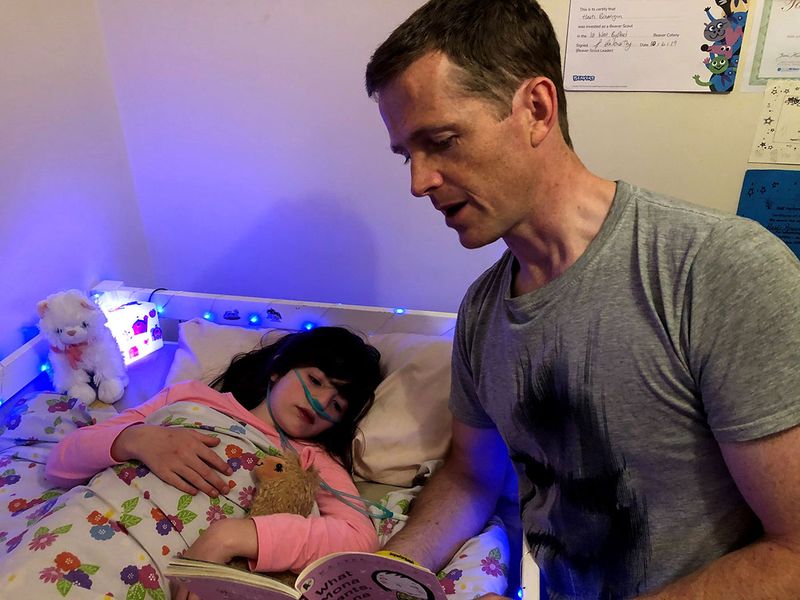
Tough diagnosis
“When we received the diagnosis we were initially devastated, because once we started to learn what CdLS was, we started to realise there was a long list of side-effects and serious medical concerns for those who have it, which include anxiety disorders, selective mutism, premature ageing, cognitive loss, cardiac problems, gastronomical problems, hearing problems … the list is very, very long and frightening.
“What frightened us the most was that children with CdLS in their teenage years begin to develop anxiety disorders and in some cases, they start to harm themselves in very serious ways. We just couldn’t imagine that for Hasti, so my wife and I started out on a journey to educate ourselves, learn about CdLS as much as we could; we read scientific journals, we talked to other families and we talked to as many doctors as we could. This was all in an effort to improve Hasti’s condition. Whether it was through supplements, or diet or exercise, we wanted to do everything we could to make her as healthy and happy as possible. While we were doing that we realised that gene therapy might be a possibility for Hasti.”
What is gene therapy?
Gene therapy allows doctors to treat a disorder by inserting a gene into a patient’s cells instead of using drugs or surgery. In Hasti’s case, this would mean inserting the correct copy of a gene into her cells to compensate for her dysfunctional HDAC8 gene, explains the HopeforHasti website, a charity started by the 10-year-old’s parents to fund the research and create the therapy from scratch.
“We started in earnest in January 2020 to raise money and begin the charity. Our goal was always to raise 2.5 million pounds; we accessed that’s how much we would need to fund all the research and the subsequent trial where we would give the therapy to children like Hasti with CdLS. As it stands right now, we have funded all the research, for which we’ve worked with the Jackson Laboratory in the US. We have created the actual therapy and we are currently testing it on disease models to make sure that it’s safe and effective. We are hoping that by the end of this year we will have a working proof of concept for the first-ever gene therapy for Hasti’s condition,” says the proud father of three.
It’s been a tough, unsteady road to navigate. When they decided to start the charity, Brannigan and his wife, Hengameh Brannigan, hadn’t quite factored in the COVID-19 effect: a nationwide lockdown. “We were really struggling to make money for the charity, we were already working with the lab, we had bills coming in – to raise money I walked 700 miles across the UK, and I did that barefoot. It was incredibly painful. My feet tore open; I has wounds on my feet that became infected. I have nerve damage on both my feet, because I’m not used to walking barefoot. It was very, very hard,” he says.
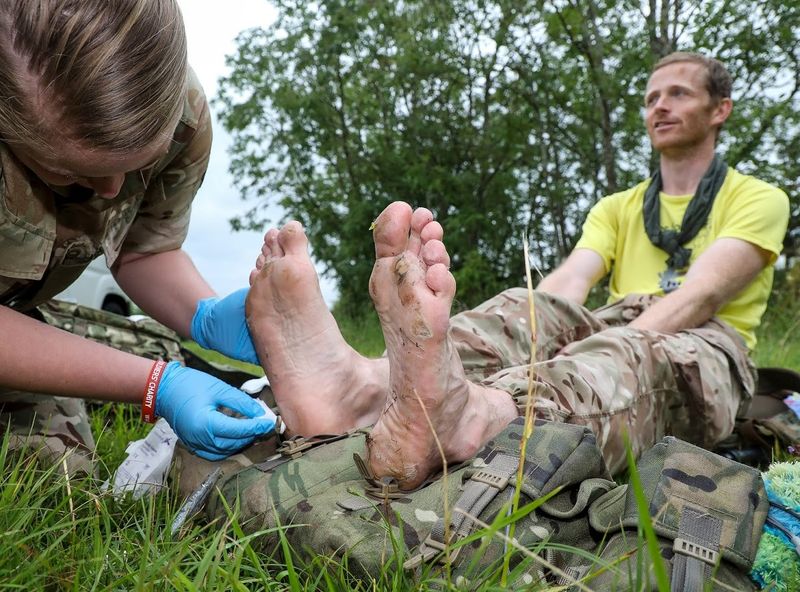
Meeting people, explaining things
“It took me 35 days to walk across the country, but we had huge support from the military community and people just in general public, who came out and walked with me every day, or brought me food or water, and it was just an incredible experience. And halfway through the walk I went to 10 Downing Street to see the Prime Minister, to drop a letter to talk about the difficulties faced by children with rare conditions in the UK face and we got a response to that letter, which was great, and we also launched a petition asking for this to be discussed in Parliament, which it was later on that year,” he says.
Since then, Brannigan has done a second barefoot walk in the US. “I walked 1,000 miles down the east coast of the United States to raise money and awareness for CdLS and the therapy we are trying to create,” he says.
The Brannigan household comprises two full-time working parents and three school-going children; Hasti and her elder brothers, 12-year-old Navid and 14-year-old Amir. “We have three kids to look after and all that comes with – making sure they are healthy and happy and doing well at school. Plus, Hasti’s condition requires extra time and then on top of that, we are trying to run a charity, which means running fundraising events, keeping people informed. We are also running the scientific projects, we have regular meetings with the labs, with our scientific advisory board and keeping all that running smoothly is all very, very difficult; it’s high pressure, because we are really worried about Hasti’s future and we are worried about not being able to do everything that we can for her and everything she deserves,” he says softly.
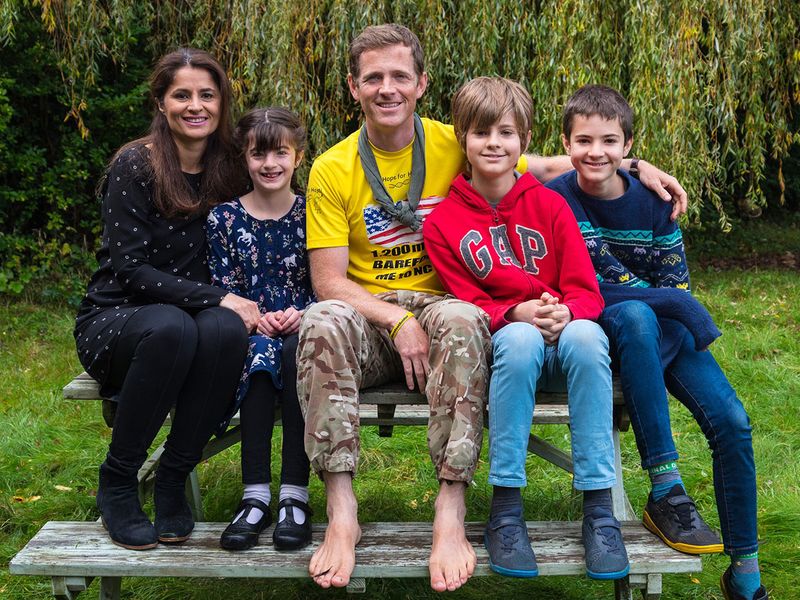
His voice trembles as he speaks about his little girl. “Hasti is a really happy, bubbly, energetic little girl. But Hasti’s condition means she needs medication every day. She receives growth hormone supplements every day, we have to go through speech and language therapy with her every day. In school, she needs support from a one-on-one teacher to help her to learn and pick up and retain those lessons.
“But in truth, she doesn’t retain the knowledge as well as other kids. And it’s difficult in that regard for us to see whether she’ll be able to finish her education and of course we don’t know what the future holds for her in terms of her health,” he explains.
One may argue that a child is the embodiment of a parent’s heart – they wouldn’t be wrong. In seeing her struggle is a helplessness, a gut-wrenching ache. “On one hand when I see Hasti at home, I see her with a dad’s eyes, you know, so I see someone who is happy, bubbly and adorable. But when I see in other contexts I see how difficult things are for her and that’s really hard to witness,” explains Brannigan.
“The other kids in her class are speaking in full sentences, they are really developing so fast, becoming more and more mature every day, and for Hasti, her development is just that much slower and that means sometimes, the things she wants to do which is to have friends and other kids her age to play with is the thing that she finds the hardest, because she can’t engage with them at the same level, she can’t speak as fast, she doesn’t understand what they are saying when they are talking to each other quickly; it’s really heartbreaking to watch her trying to make friends but not quite succeeding, because I know she needs and wants that more than anything. That’s really hard to watch as a parent.”
Fortunately, the elder brothers are – well – elder brothers. “They treat her the same way they treat each other, you know; they tease her, they make fun of her, they play with her, they have fun with her, they read books with her and play games with her – they are really supportive but at the same time they are two cheeky little boys (laughs), who like making life difficult for their sister when they think it’s funny to do so. But about how they are coping … I think they would like to have a bit more time with their mum and dad; we are often too busy to spend as much time with them as we’d like – and that’s a hard thing for us to know and cope with, but I think they also understand that we are trying to do something that’s important for Hasti and they’ve been very mature about it,” he says.
Ten-year-old Hasti loves to swim, dance and cook. She hopes to be a chef when she grows up. Hasti is the girl with CdLS. She also the child with a loving, devoted family, sparkling eyes and blindingly bright smile.
Tell us about your parenting journey at parenting@gulfnews.com



